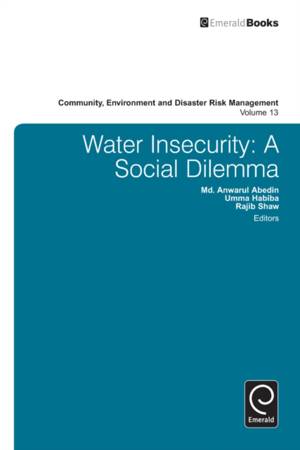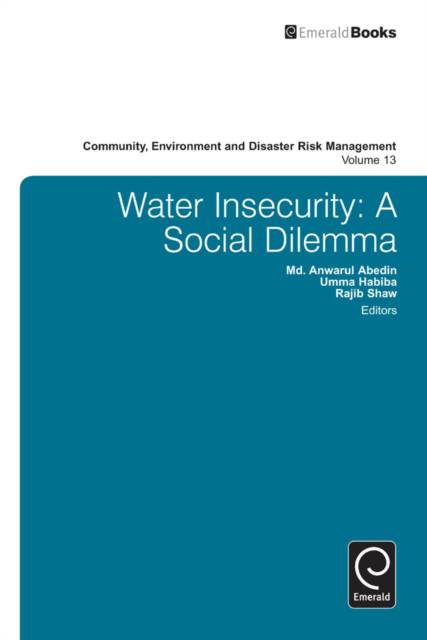
Je cadeautjes zeker op tijd in huis hebben voor de feestdagen? Kom langs in onze winkels en vind het perfecte geschenk!
- Afhalen na 1 uur in een winkel met voorraad
- Gratis thuislevering in België vanaf € 30
- Ruim aanbod met 7 miljoen producten
Je cadeautjes zeker op tijd in huis hebben voor de feestdagen? Kom langs in onze winkels en vind het perfecte geschenk!
- Afhalen na 1 uur in een winkel met voorraad
- Gratis thuislevering in België vanaf € 30
- Ruim aanbod met 7 miljoen producten
Zoeken
Water Insecurity
A Social Dilemma
€ 267,45
+ 534 punten
Omschrijving
It has been estimated that globally, 1.2 billion people live with acute shortage of water. Water scarcity, particularly in south and south-east Asian countries, is well known. However, the social dilemmas and insecurities related to water issues are often less discussed. In the case of south and south-east Asia, the distribution of available water amongst various casts and creeds has been determined through several social hierarchies. Hence, water forms a critical socio-political issue, with a multi-faced dimension. This book critically analyses the associated social issues of increasing water scarcity in countries such as India. It documents the social impacts and predicament of water scarcity. The book will be of prime interest to researchers, policy makers and practitioners in the fields of development and environment, as well as water planners, and it will be a useful reference guide for future research in the field of water scarcity and risk management. Topics analysed include arsenic contamination, the impact of salinity on livelihood and mitigation, and drought resilience, adaptation and policy. The book concludes by providing lessons, challenges and future perspectives of water insecurity.
Specificaties
Betrokkenen
- Uitgeverij:
Inhoud
- Aantal bladzijden:
- 200
- Taal:
- Engels
- Reeks:
- Reeksnummer:
- nr. 13
Eigenschappen
- Productcode (EAN):
- 9781781908822
- Verschijningsdatum:
- 14/12/2013
- Uitvoering:
- Hardcover
- Formaat:
- Genaaid
- Afmetingen:
- 155 mm x 231 mm
- Gewicht:
- 589 g

Alleen bij Standaard Boekhandel
+ 534 punten op je klantenkaart van Standaard Boekhandel
Beoordelingen
We publiceren alleen reviews die voldoen aan de voorwaarden voor reviews. Bekijk onze voorwaarden voor reviews.








